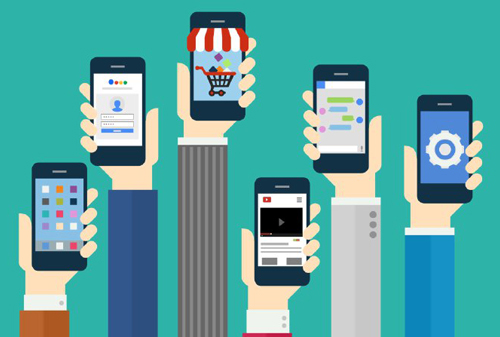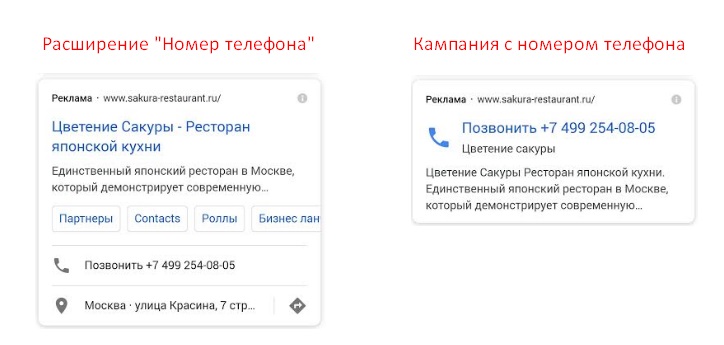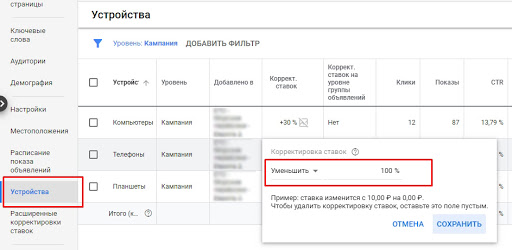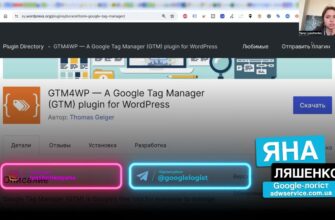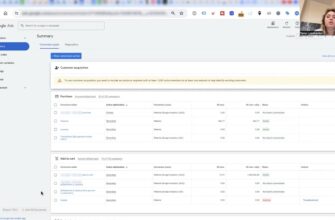Mobile traffic in contextual advertising should be considered as a special phenomenon. Even though the resolution of smartphone displays is steadily increasing, and voice input makes mobile search quick and easy, the behavioral metrics of smartphone users are significantly different from those who access websites from a PC.
Information! The most common reasons why smartphone owners enter a search query are to clarify already known information or quickly solve a problem.
The advertiser’s task in this situation is to help the user as quickly and precisely as possible.
Why is mobile traffic so important in contextual advertising?
The percentage of mobile gadgets in the total number of all devices through which we go online and make online purchases is constantly growing.
How many calls and sales will I get by ordering contextual advertising from you?
I need to calculate the conversion of my website Describe
the task
in the application
Calculate potential ad revenue Google
contextual advertising calculator
Information! According to the analysis, about 9 out of 10 people who use the Internet in their daily lives work with websites and applications not only on personal computers, but also on smartphones and tablets. And almost half do not use a PC for such purposes at all. Among them, there will definitely be your buyers.
If your company is not a large business, then the flow of clients using only a desktop computer for search is enough. But mobile traffic in Google Ads can be the trigger that will take your business to the next level of sales by expanding your reach and audience.
How many calls and sales will I get by ordering contextual advertising from you?
I need to calculate the conversion of my website Describe
the task
in the application
Calculate potential ad revenue Google
contextual advertising calculator
And for some areas of activity, working correctly with mobile traffic and stimulating its increase in general is a key task.
Which niches are dominated by mobile traffic?
Traffic from smartphones and tablets has a positive effect on the sales of any company whose customers order goods or services on the Internet.
But it is impossible to appreciate the significance of such a flow of users without testing and comparing advertising costs and the profit that it generates. However, there are areas where mobile traffic is the main one and working with it is required by default:
- Apps for mobile devices. Of course, it is most reasonable to promote any program on those devices on which it will subsequently be installed. Additional benefits are provided by direct redirection of the user from the advertisement to the directory for downloading the program. This increases the number of those who download at least a demo version to their smartphone;
- “Emergency” services. The cost of the service is almost never a decisive factor in case of unforeseen circumstances – calling a tow truck, a plumber or a locksmith. A consumer who finds himself in an unpleasant situation will most likely not explore the site, but will use the quick “Call” button in the ad unit. “Urgent” services are often ordered from outside the house – from the street, from transport, at the entrance. Therefore, in such cases, it is mobile traffic that plays a huge role;
- You do not need to visit the site to place an order. This includes delivery services, taxi fleets and similar express services. Like emergency services, it is more convenient to order such services by dialing a phone number directly from a mobile browser, and not waste time filling out an online application;
- Dots are “nearby”. For an offline business, customers who are looking for points located within a couple of minutes walk from their location where they can purchase a product or receive a service are extremely important. Examples of such niches are cafes, restaurants, shoe shops, flower shops, beauty salons, payment terminals. Mobile traffic for such companies is an essential component of the overall flow of visitors;
- The share of mobile traffic exceeds 15%. It is necessary to evaluate the effectiveness, optimize and work on increasing the conversion of mobile traffic if its share exceeds 15% of all clicks on advertisements;
- Deals by phone. By giving users the option to make a phone call without going to your site, you can generate additional leads. This hypothesis should be tested for any business where a deal is made in the process of talking on the phone.
If any of the situations described apply to you, keep reading – we will tell you about the factors that you need to consider in order to effectively process mobile traffic.
Key differences between mobile and desktop traffic
Mobile traffic has several features, without which it is impossible to increase sales:
- User behavior. Using mobile gadgets, consumers search for information faster, sometimes in a hurry, so they hardly delve into the text of advertising. For them, the priority is getting the necessary information already in the headline of the ad. It needs to be given special attention when setting up contextual advertising;
- Impression distribution. You can create different ads for different types of devices: standard ads will be displayed on large screens, while mobile ads will be displayed on smartphones and tablets. Now, this feature is losing relevance due to the increase in the resolution of phone displays, but we should not forget about the possibility of such a setting in an advertising campaign;
- Shortcut. By adding a virtual business card with a phone number to your ad, you give potential customers the opportunity to call the company manager by clicking on a special icon displayed in the ad unit;
- Length of titles and site links. The problem of long site links and headlines was relevant a few years ago, when smartphone screens did not fit them entirely. Now you don’t have to limit yourself in size – you can even add a second heading, the main thing is that the number of characters does not exceed the maximum allowed.
How to work with mobile traffic in Google Ads contextual advertising?
- Use a phone number extension. Sometimes making a call from your mobile is much easier than browsing the site and filling out an online form. On the plus side, the phone number increases the amount of space the ad takes up on the page, thereby drawing more attention to it. On phone screens, the number is replaced by a button, by clicking on which you can immediately contact the advertiser’s office:

- Optimize your site for mobile devices. Evaluate how the pages of a web resource look on different screens. As soon as users encounter problems and cannot download or read content, they immediately leave the site, thereby reducing the return on advertising;
- Use AMP pages. Google loads such pages from its cache, and not from the advertiser’s site, so they load instantly and help to significantly increase the reach of the mobile audience;
- Try the Phone Number Only format. It is relevant for companies providing “urgent” services, whose transactions with customers are overwhelmingly made by phone. The contact number in such ads is included in the header, by clicking on which the user can instantly make a call;
- Segment the statistics. Each type of traffic should be analyzed separately, because the behavior of users of different devices is very different. For example, numerous bounces from smartphones can be caused by the fact that immediately after loading the site, visitors click on the phone number;
- You can’t turn off smartphone impressions in AdWords. The system offers only to reduce the share of such traffic (by a maximum of 50%). If the advertiser is interested in attracting traffic from smartphones and tablets, then the share can be increased (by a maximum of 1200%):

- Conversion of different types of traffic is different. When working with mobile traffic in contextual advertising and having problems with its conversion, you should audit the mobile version of the site;
- Use different CTAs. For smartphone owners, the call “Call right now” is more relevant, for PC users – “Submit an online application”.

